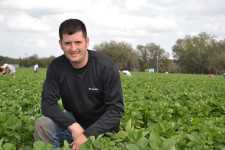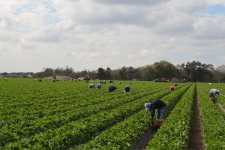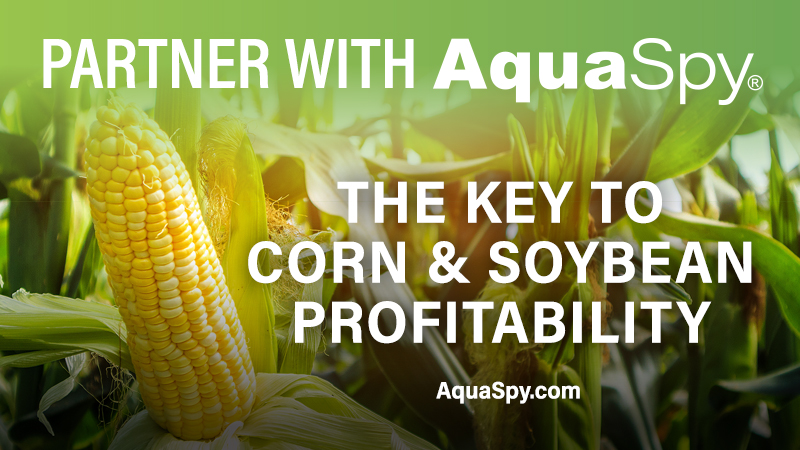Market, Regulations Challenge Florida Strawberries

If you were to take a snapshot of Florida’s proud strawberry heritage, one image that might arise would be that of the Parke family’s farm. Roy Parke Jr., an Irish immigrant, moved to Plant City in 1956 to start growing berries. In 1969, Roy’s daughter Cheryl and her husband Jim Meeks opened the iconic Parkesdale Farm Market where lines run out the door waiting for their famous strawberry shortcake and milkshakes to this day.
Matt Parke is the fourth generation in the family to grow strawberries in Plant City. He says it is a way of life that he loves, but one that has faced more than its share of challenges in recent years. Last year’s season could only be described as a disaster as prices collapsed early in the Florida season.
“It is hard to make a profit,” he says. “It used to be we would have a couple of OK years where we would make a little money or even lose a little. Then on that third year, we would have the big comeback season. Now, you can go four or five seasons losing money. That is pretty tough, especially when you are trying to get someone to back you or get a loan.”
On the bright side, this season started out strong price-wise for growers. “No two seasons are ever alike,” says Ted Campbell, executive director of Florida Strawberry Growers Association. “The market flooded last year in mid-December, which crashed the price. When prices go down, they seldom recover, so most growers lost their most profitable early-season sales and therefore only a few were able to break even for the entire season.
“This year, the plants had a more sluggish start. California volume declined earlier, and prices held up pretty well until early January. The greatest similarity to last year is the unseasonably warm weather creating accelerated production with no gaps due to adverse weather. It’s oversupply all over again.”
Changing Production Landscape
With four generations under their belt, the Parke family has gotten very good at growing strawberries. But, they have had to adjust production over the years to keep up with changing realities and regulations.
One of the biggest production adjustments in recent years has been the phase-out of methyl bromide and stricter regulations on existing fumigants. “The 98/2 formulation was the single best thing you could apply to take care of nematodes, weeds, and soil diseases,” says Parke. “They started phasing it out five years ago, so we’ve been trying different products in trials. We’ve worked with Dr. Joe Noling (a nematologist with UF/IFAS) on a number of trials and see some promising products out there.”
New fumigant label rules are adding costs and time for growers. “I do the applications on the farm, so I’ll have to get the new training and certification, which I hear takes a good bit of time,” says Parke. “It is just getting to be more paperwork and more of everything. And, it all costs money.”

To diversify risks and get the most out of beds, the farm has added vegetables in their mix. “We try to get three crops off the plastic in one year,” says Parke. “We come in with vegetables, then strawberries, followed by another vegetable planting.”
Pickling cucumbers is the most significant crop behind strawberries. From year to year, a variety of other vegetables are planted on the farm.
Parkesdale Farms Fields Farm Management Issues

Another area where regulation is touching agriculture is new rules under the Food Safety Modernization Act. The reform is the largest food safety overhaul in more than 70 years.
Parke says their farm is well positioned for the new regulations because they already undergo third party food safety audits by Primus.
Campbell notes the food safety rules could be an opportunity to achieve more uniform standards across the industry. “The proposed regulations incorporate many of the protocols we already employ in our BMPs,” he says. “We thank FDA for recognizing that our farms have already addressed many areas of concern. The timeline of actual implementation is probably a few years, and everyone must continue to be very diligent. Obviously, if farms are not following proper practices, the entire industry is vulnerable to the ‘weakest link.’ There is no room for error. Another goal we have coming out of the federal regulations is to harmonize audit standards under the new law.”
Strides In Conservation
The historic 11-day freeze in 2010 forced growers to use unprecedented amounts of water to save their crops. While the event brought some bad PR at the time, growers’ proactive measures before and after the freeze have improved water conservation.
“We are using drip irrigation on all fields, so we are saving massive amounts of water compared to overhead,” says Parke. “This year, we are working with the Southwest Florida Water Management District to install a reclaimed water pond on one of our main strawberry blocks.
“The 2010 freeze was a historic, once in a lifetime kind of event. We are doing everything we can to conserve water and have had no problems since then.”
Imports And Oversupply
If you asked any strawberry grower what their biggest concern is right now, most would reply Mexico. Parke agrees, “Mexico is coming in and undershooting our price by $4 per flat minimum. They can dump more strawberries on our market in a week than we pick in a year.”
Currently, UF/IFAS is collecting data to see if there is sufficient evidence to support an anti-dumping case.
“Yes, we have substantial competition from Mexico, and we are aggressively urging consumers to support fruit grown in the U.S. so American farmers can survive,” says Campbell. “From what I understand, Mexico presently has about twice the acreage of Florida, so their imports will continue to swamp us for the foreseeable future.
“This is not necessarily dumping, but more a situation of oversupply. Our growers must continue to maintain the highest grade standards to win and stay competitive in the marketplace.”
Forging Forward
The way forward in achieving a sustainable strawberry industry in Florida will call for advancements in both science and marketing. The strong breeding program at UF/IFAS has given the state’s growers an edge for years and that looks to continue.
“We are in our third season planting the Radiance variety,” says Parke. “It is an amazing berry. It produces great yields and is a beautiful fruit that tastes great.”
But with advancements, Campbell says increasing consumption is more important than ever. “Even if we achieve technological improvements to better deal with production challenges or we breed the best plants in the world, we cannot survive without increasing demand,” he says. “High-density planting, disease-resistant varieties, or even a magic bullet fumigant will not correct oversupply.
“Our industry needs to come together with strong grade standards and aggressive consumer marketing. Our fruit has the greatest attributes of anything in the produce department (flavor, popularity, health and nutrition benefits, convenience, and versatility), but if we cannot increase consumption, if we cannot communicate the plight of American farmers to the public, if we cannot be the best value in the marketplace, our sustainability is in jeopardy.
“We spend a lot of money researching production efficiencies, but in comparison, we spend very little to increase sales of our product. This is obviously a chicken and an egg issue because low market returns do not provide adequate funding for aggressive marketing. We don’t have an answer to that question yet, but it is certainly a very critical issue moving forward.”
Strawberry Shakes, Cakes, And Social Media

There are certain icons that exemplify Florida’s strawberry industry. First and foremost are the sweet, red fruit, then the spring festival that celebrates the berry. High among the ranks also would be Parkesdale Farm Market in Plant City.
Started in the back of a pickup as a means to move berries that couldn’t be sold into retail, the market has grown into an immensely popular stop right off the busy I-4 corridor. For years, thousands have passed through the market to samples its world famous strawberry shortcakes and milkshakes.
Xiomara Meeks joined the family business after marrying Jim Meeks and moving up from South Florida so they could be closer to their family. “We moved here in 2007 when our first daughter was nine months old and have never looked back,” she says.
One of her first orders of business was to establish a Facebook page for the market. The page now has more than 3,000 fans. Since then, she also established a Twitter, Pinterest presence, and blog to promote the market.
“My in-laws Jim and Cheryl really built the business over the years,” she says. “What I am trying to do with social media is reach new people. I am proud of the audience we have built.”
These efforts have paid off in new and loyal customers and in some surprising ways. Through Twitter, she met chef James Petrakis, the owner of one of Orlando’s most popular restaurants “The Ravenous Pig.” Petrakis came to the market to give a cooking demonstration and display his new “Seasons Of Florida” cookbook. All of which created a buzz around the market.
“The demonstration turned out great,” she says. “Jim was able to sell some of his books and we had a great crowd on hand to buy some of our items.”
The Food Network Canada also found the market through social media. It aired a feature on the market in January.
The promotion efforts seem to be paying off. The market started off 2013 with a bang, breaking a milkshake record on the last Sunday in January, serving 1,008 shakes.










